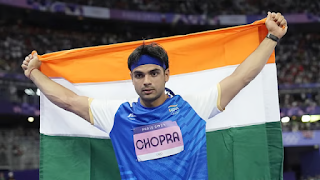The Unseen Hurdles: Why Neeraj Chopra Hasn't Received All His Prize Money
Neeraj Chopra, the Indian javelin thrower who captured hearts with his gold medal at the Tokyo 2020 Olympics, stands as a symbol of athletic excellence. Despite his monumental achievement, there have been persistent questions regarding why he has yet to receive certain prize money associated with his victory. To uncover the reasons behind this, we must delve into a mix of complex factors beyond mere administrative oversight.
 1. Complex Administrative Systems
1. Complex Administrative Systems
One of the foremost reasons for delays in prize money disbursement lies in the intricate web of administrative systems. Prize money is often routed through various channels, including government bodies, sports federations, and private sponsors. Each entity has its own set of procedures, approvals, and bureaucratic hurdles. For an athlete of Chopra’s stature, the sheer number of stakeholders involved can lead to significant delays.
2. Variability in Prize Structures
Prize money is not always straightforward. Different organizations and sponsors have their own methods for awarding funds. In some cases, the prize money might be tied to additional conditions or milestones that need to be met before disbursement. This variability can create a fragmented process where Chopra might receive funds from some sources but not others, leading to confusion about the total prize package.
3. Taxation and Legal Formalities
Another layer of complexity comes from taxation and legal requirements. Prize money is often subject to tax regulations, which can affect how and when it is distributed. Additionally, athletes might need to navigate legal formalities, such as contract terms or compliance with regulations, before accessing their funds. These processes can sometimes cause delays, as they require thorough handling to avoid future legal complications.
4. Funding Source Discrepancies
Chopra's prize money could also be influenced by the specifics of his funding sources. Private sponsors, for example, may have unique stipulations or timelines for releasing funds. Furthermore, if the prize money is partially funded by corporate sponsors, there might be negotiation periods or additional terms to fulfill before the funds are fully released.
5. Miscommunication and Public Perception
The public and media often play a role in shaping perceptions of such issues. Inaccurate or incomplete information can lead to misconceptions about whether Chopra has received his prize money. Media reports may not always reflect the full picture, leading to confusion and speculation. Clarifying these misconceptions requires clear communication from the involved parties, which is sometimes lacking.
6. Ongoing Negotiations
Prize money deals can be subject to lengthy negotiations. Athletes, their agents, and the involved organizations may need to engage in extensive discussions to finalize the terms of disbursement. This can lead to delays, as each party works to align their interests and complete the necessary agreements.
Conclusion
Neeraj Chopra’s situation with prize money is a multifaceted issue influenced by administrative processes, variability in prize structures, taxation and legalities, funding discrepancies, and public perception. While these factors can contribute to delays, they also highlight the complexities involved in awarding and receiving substantial prize money. Chopra’s achievements remain a testament to his skill and dedication, and it is anticipated that these financial matters will be resolved as the involved parties navigate the necessary procedures. Understanding these underlying factors can provide clarity and context to the situation, allowing us to better appreciate the intricate nature of prize money distribution in the world of elite sports.
- Get link
- X
- Other Apps



Comments
Post a Comment